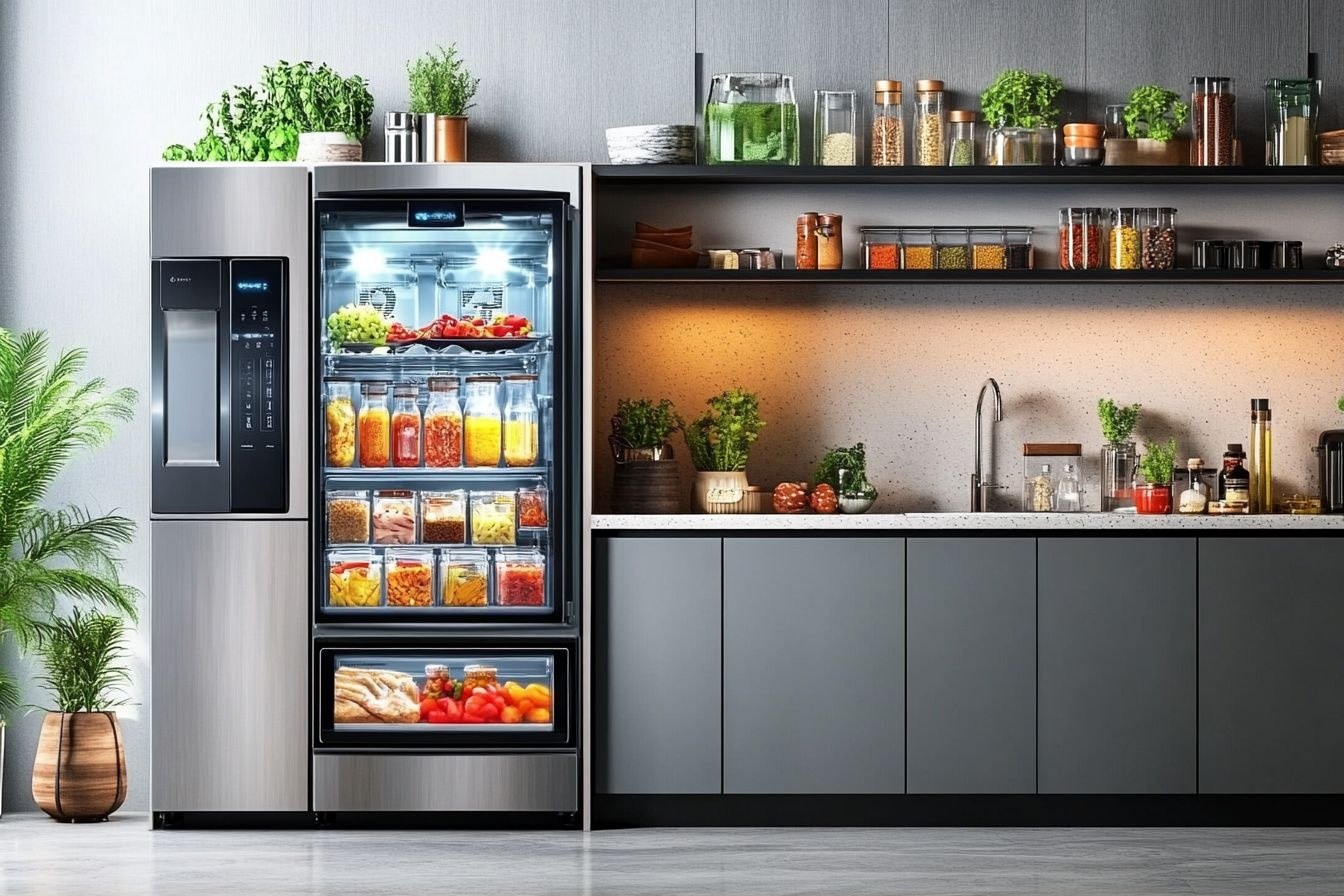The Complete 2025 Guide to Choosing a Refrigerator in the UK
Selecting the right refrigerator for a British home involves unique considerations, from integrated vs. freestanding models to understanding the new A-G energy labels. This guide cuts through the confusion, offering expert advice on the top brands, layouts, and features to look for, ensuring you find an appliance that perfectly suits your kitchen and lifestyle.

How do the new A-G energy labels impact your choice?
Understanding the new A-G energy labels is crucial for making an eco-friendly and cost-effective choice. Introduced to replace the older A+++ to D system, these labels provide a clearer picture of a refrigerator’s energy efficiency. The most efficient models now carry an ‘A’ rating, while ‘G’ represents the least efficient. By opting for an A-rated fridge, you can significantly reduce your energy bills and carbon footprint. When shopping, pay close attention to the annual energy consumption figure on the label, as this will give you a more accurate idea of running costs.
What’s the difference between integrated and freestanding fridges?
The choice between integrated and freestanding refrigerators often comes down to kitchen design and personal preference. Integrated fridges are built into your kitchen cabinetry, offering a seamless look that’s popular in modern British homes. They’re ideal for those who prefer a uniform appearance but may have less capacity and can be more expensive. Freestanding fridges, on the other hand, offer more flexibility in terms of size and style. They’re typically less expensive and easier to install, making them a practical choice for many households. Consider your kitchen layout and long-term plans when deciding between these options.
How do German brands like Bosch and Miele compare for UK kitchens?
German engineering has long been associated with quality and reliability, and this holds true in the refrigerator market. Bosch and Miele are two standout brands that have gained popularity in UK kitchens. Bosch is known for its innovative features and excellent value for money, offering a range of models to suit different budgets. Miele, while generally more expensive, is renowned for its premium build quality and longevity. Both brands excel in energy efficiency and offer models designed to meet the specific needs of British consumers, such as appropriate sizes for UK kitchens and features tailored to British cooking and shopping habits.
Are retro-style fridges more than just a fashion statement?
Retro-style refrigerators, popularized by brands like Smeg, have become a trendy choice for those looking to make a statement in their kitchen. While these fridges certainly add character and nostalgia to your space, it’s important to consider their practical aspects as well. Many modern retro-style fridges combine vintage aesthetics with contemporary technology, offering energy efficiency and advanced features. However, they may have less capacity than similarly sized standard models and can be more expensive. When considering a retro fridge, look beyond the appealing exterior and evaluate its functionality, energy rating, and storage options to ensure it meets your practical needs.
What unique considerations should British homeowners keep in mind?
British homes often have smaller kitchens compared to those in other countries, making efficient use of space a top priority. Look for refrigerators with well-designed interiors that maximize storage capacity without taking up too much floor space. Additionally, consider the UK’s climate when choosing features. While frost-free technology is beneficial, it may not be as crucial in the milder British weather as it is in more extreme climates. Pay attention to the noise level of the fridge, especially if you have an open-plan living area or a kitchen-diner, as this is increasingly important in modern British homes.
How do frost-free and auto-defrost technologies compare?
Frost-free and auto-defrost are two technologies designed to prevent ice build-up in your fridge-freezer, but they work differently. Frost-free systems use a fan to circulate dry, cold air, preventing frost from forming altogether. This means you’ll never have to manually defrost your freezer. Auto-defrost, on the other hand, periodically warms the refrigerator’s cooling elements to melt any frost that has accumulated. While both save you the hassle of manual defrosting, frost-free systems are generally more effective but can be more expensive and use slightly more energy. Consider your priorities in terms of convenience, energy usage, and initial cost when choosing between these options.
| Brand | Model | Energy Rating | Capacity (L) | Estimated Annual Running Cost |
|---|---|---|---|---|
| Bosch | Serie 4 KGN36VLEAG | C | 324 | £45 |
| Miele | KFN 28132 D ws | D | 310 | £52 |
| Smeg | FAB32 | F | 331 | £78 |
| Samsung | RB38T633ESA | C | 390 | £47 |
| LG | GBB92STAXP | B | 384 | £39 |
Prices, rates, or cost estimates mentioned in this article are based on the latest available information but may change over time. Independent research is advised before making financial decisions.
Choosing the right refrigerator involves balancing aesthetics, functionality, and efficiency. By considering factors such as energy ratings, style preferences, and specific features like frost-free technology, you can find a fridge that not only complements your kitchen but also serves your household’s needs effectively. Remember to measure your space carefully and consider long-term costs when making your decision. With this guide, you’re well-equipped to navigate the diverse range of options available to UK consumers in 2025 and beyond.




